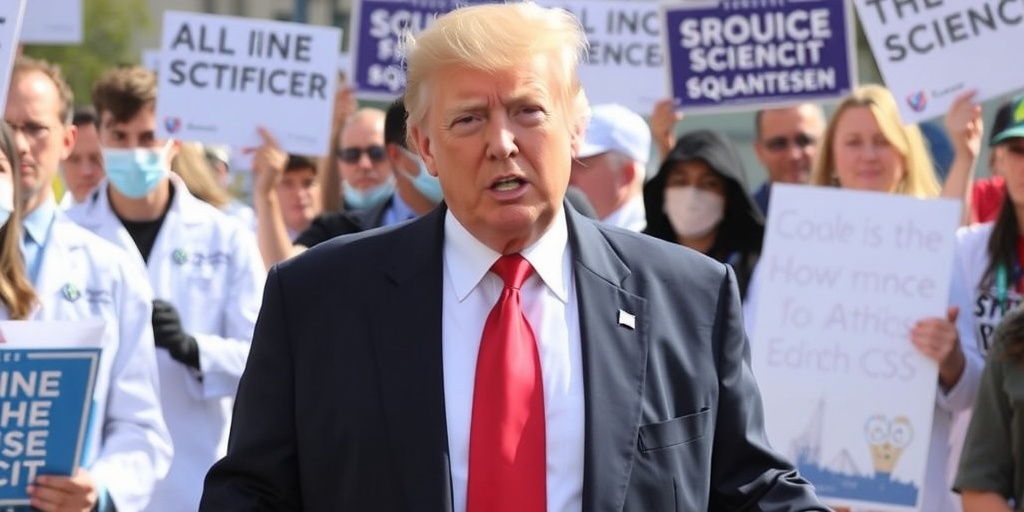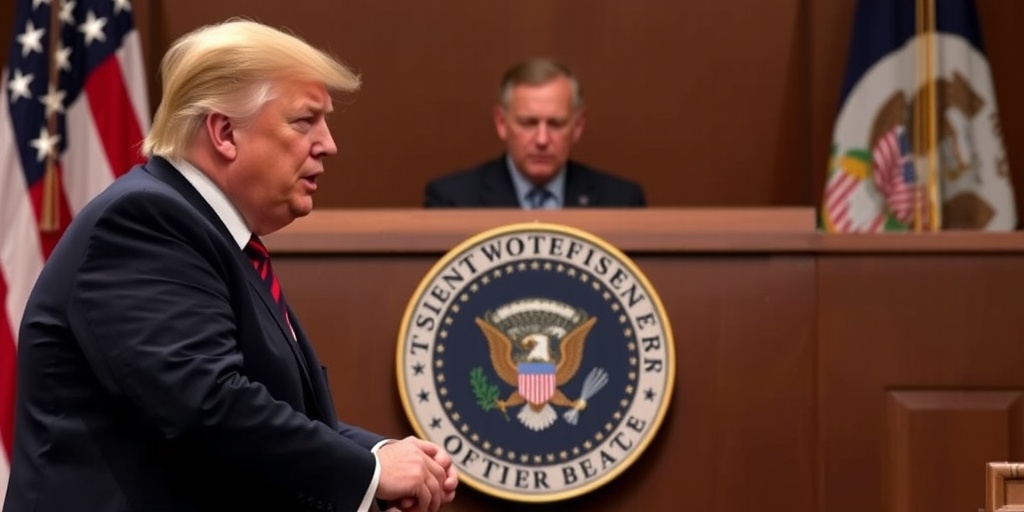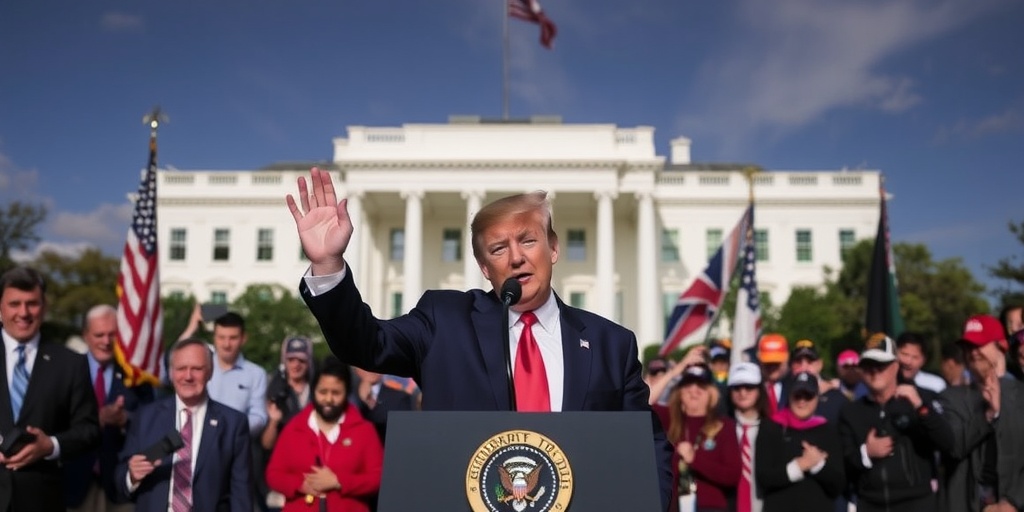Now Reading: Scientists Unite to Protest Trump’s Actions
-
01
Scientists Unite to Protest Trump’s Actions
Scientists Unite to Protest Trump’s Actions

Stand Up for Science: A New Movement in Defense of Science
On February 8, Colette Delawalla, a graduate student in psychology at Emory University, expressed her concerns publicly about the state of science in America through a post on Bluesky, a social media platform. “I’ve never done this before, but we gotta be the change we want to see in the world,” she stated, announcing her plan to coordinate a national protest in defense of science. Delawalla’s rallying cry quickly resonated with a team of scientists who rallied around her vision, leading to the formation of the protest event aptly named "Stand Up For Science," set to take place on March 7 on the National Mall in Washington, D.C., alongside satellite protests across the nation.
The movement is viewed as a revitalization of the March for Science, which took place globally in April 2017 during a politically charged period following the election of former President Donald Trump. However, unlike its predecessor, "Stand Up For Science" is organized by a different team, fueled by a distinct drive in the shifting political landscape after the COVID-19 pandemic. Ms. Delawalla noted the change in focus, stating, “The spirit of it is the same… now we are in a position of being on defense as opposed to offense.”
Many of the threats that originally mobilized scientists during Trump’s first administration, such as the deletion of federal databases and significant budget cuts to scientific research, never entirely materialized. However, this time around, the landscape has shifted significantly in a matter of weeks after Trump’s inauguration. Through various executive orders, his administration has already terminated critical funding for global health programs, fired disease screeners at borders, significantly altered climate policies, and laid off thousands of workers across federal science agencies. With Robert F. Kennedy Jr. appointed as the health secretary, scientific circles are again concerned about the future of research and funding.
In reflecting on the legacy of the earlier March for Science and the political landscape that has emerged since then, Jonathan Berman, one of the leaders of the 2017 march, expressed that the current administration poses "direct attacks on science." He also highlighted his regrets about the organizational structure of the 2017 movement, wishing he had led with a clearer message and explicit goals.
Ms. Delawalla recounts her journey into political activism, emphasizing her lack of prior experience. However, through her connectivities on Bluesky, she quickly formed a core team of like-minded researchers, including Sam Goldstein, Emma Courtney, Leslie Berntsen, and JP Flores. They collectively aimed to ensure that their movement remains distinct from its predecessor by having defined objectives, such as boosting science funding, reinstating federal scientists who were dismissed, and restoring public access to scientific information.
The organizing group decided to schedule the protest on a Friday, aligning with the U.S. Senate’s session, allowing the focus to remain on American policymakers—who they identified as their primary target audience. Together, they articulated the movement with a clear statement: "Everything is political.” Dr. Berntsen pointed out the reality that scientific issues interlace with the political sphere, highlighting the impact of executive orders that aim to dismantle diversity, equity, and inclusion initiatives within science, which disproportionately affect historically marginalized communities.
Under the growing banner of "Stand Up For Science," the movement has gained momentum with over 50,000 followers on Bluesky and endorsements from prominent figures like Hank Green and Mark Cuban. Volunteers across the country have come together to organize satellite protests in over 30 cities. As anticipation builds for the rally in Washington, D.C., the organizing team has applied for a protest permit for a turnout of up to 10,000 participants, though uncertain about the expected attendance.
Speakers for the event include recognizable figures in science advocacy such as Bill Nye, Gretchen Goldman of the Union of Concerned Scientists, and Francis Collins, the former director of the National Institutes of Health. The protest signifies more than just a single event for the team; Mr. Flores emphasized, “March 7 is not the end goal for us. It’s the beginning,” indicating a long-term commitment to defending and advocating for science in a landscape where scientific integrity is increasingly challenged.
Through the convergence of individual determination and collective action, "Stand Up For Science" seeks to unite scientists and the public alike in a shared mission to safeguard the role of science in society, ensuring that foundational truths are not lost amid fluctuating political tides.
Stay Informed With the Latest & Most Important News
Previous Post
Next Post
-
 01New technology breakthrough has everyone talking right now
01New technology breakthrough has everyone talking right now -
 02Unbelievable life hack everyone needs to try today
02Unbelievable life hack everyone needs to try today -
 03Fascinating discovery found buried deep beneath the ocean
03Fascinating discovery found buried deep beneath the ocean -
 04Man invents genius device that solves everyday problems
04Man invents genius device that solves everyday problems -
 05Shocking discovery that changes what we know forever
05Shocking discovery that changes what we know forever -
 06Internet goes wild over celebrity’s unexpected fashion choice
06Internet goes wild over celebrity’s unexpected fashion choice -
 07Rare animal sighting stuns scientists and wildlife lovers
07Rare animal sighting stuns scientists and wildlife lovers





















